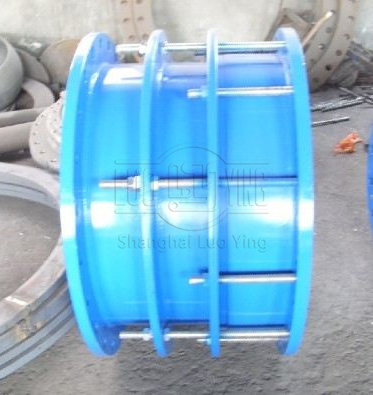What factors should be considered for thermal expanders?
Feb-23-13
When the medium contains active anions (common as thermal expanders), the balance is damaged and dissolution prevails. The reason is that the thermal stretchers can preferentially and selectively adsorbed on the thermal stretchers, the oxygen atoms crowded out, and then and the cations in the thermal stretchers form a soluble chloride, in the newly exposed substrate thermal stretchers on a specific point naturally generated small etch pits (pore diameter more than 20 ~ 30μm), these small etch pits are called pore etch nuclei, can also be understood as etch pore naturally generated by the active center. The presence of the thermal expander plays a direct ring-breaking role in the passivation state of the thermal expander. The passivation zone of thermal expanders decreases with increasing concentration of thermal expanders. In part the thermal stretchers are damaged together with the other protective film stays intact, which allows the conditions of pitting to end and strengthen. According to the mechanism of electrochemical generation, the electrode potential of a thermal expander in the activated state is much higher than that of a thermal expander in the passivated state.The thermal expander then meets the thermodynamic conditions of electrochemical corrosion, and the activated state thermal expander becomes the anode, and the passivated state thermal expander acts as the cathode. The corrosion point involves only a small part of the thermal expander, and the rest of the surface is a large cathodic area. In the electrochemical reaction, the cathodic reaction and the anodic reaction is carried out at the same speed, so the convergence to the anodic corrosion point is very obvious corrosion rate, there is a significant penetration, so as to constitute a point corrosion. Various defects on the surface of the thermal expansion device such as surface sulfide adulteration, grain boundary carbide accumulation, surface grooves at the local, the thermal expansion device is the first to be damaged to expose the bottom thermal expansion device appear small etch holes (pore size more in 20 ~ 30μm), which is the sub-stable pore nucleus, become the natural generation of pitting corrosion activity center.
After the etching nucleus is constituted, a suitable part of the point may still be passivated again, if the resistance to passivation is small, the etching nucleus will no longer grow. When affected by the promotion factors, the nucleus continues to grow to a certain critical standard (general pore diameter greater than 30μm), the surface of the thermal expander microscopically visible corrosion holes, this particular point becomes the source of pore corrosion. Etching hole in the thermal expansion device surface in the active state, the potential is more negative; etching hole outside the thermal expansion device surface in the obtuse state, the potential is more positive, so the hole and outside the hole constitutes an active state - obtuse state micro-electric couple corrosion thermal expansion device, thermal expansion device has a large cathode - small Anode area than the structure, anode current density is very large, corrosion hole deepened quickly. Outside the hole thermal expander surface together with the cathodic protection, can continue to adhere to the blunt state.
The thermal expander is stagnant relative to the medium outside the hole, the dissolved thermal expander cation is not easy to dissipate outward, and dissolved oxygen is not easy to dissipate in. Due to the increase in the concentration of thermal stretchers cations in the hole, the negatively charged thermal stretchers move to the hole to adhere to the electric neutrality, which constitutes a concentrated solution of thermal stretchers chloride in the hole, and this enriched solution of thermal stretchers can make the surface of thermal stretchers in the hole continue to adhere to the activity. Also due to the chlorides hydrolysis and other reasons, the acidity of the thermal telescope increases, so that the anode dissolution speed is further accelerated, coupled with the role of gravity, the erosion hole accelerates to the deeper expansion of the thermal telescope manufacturer.


